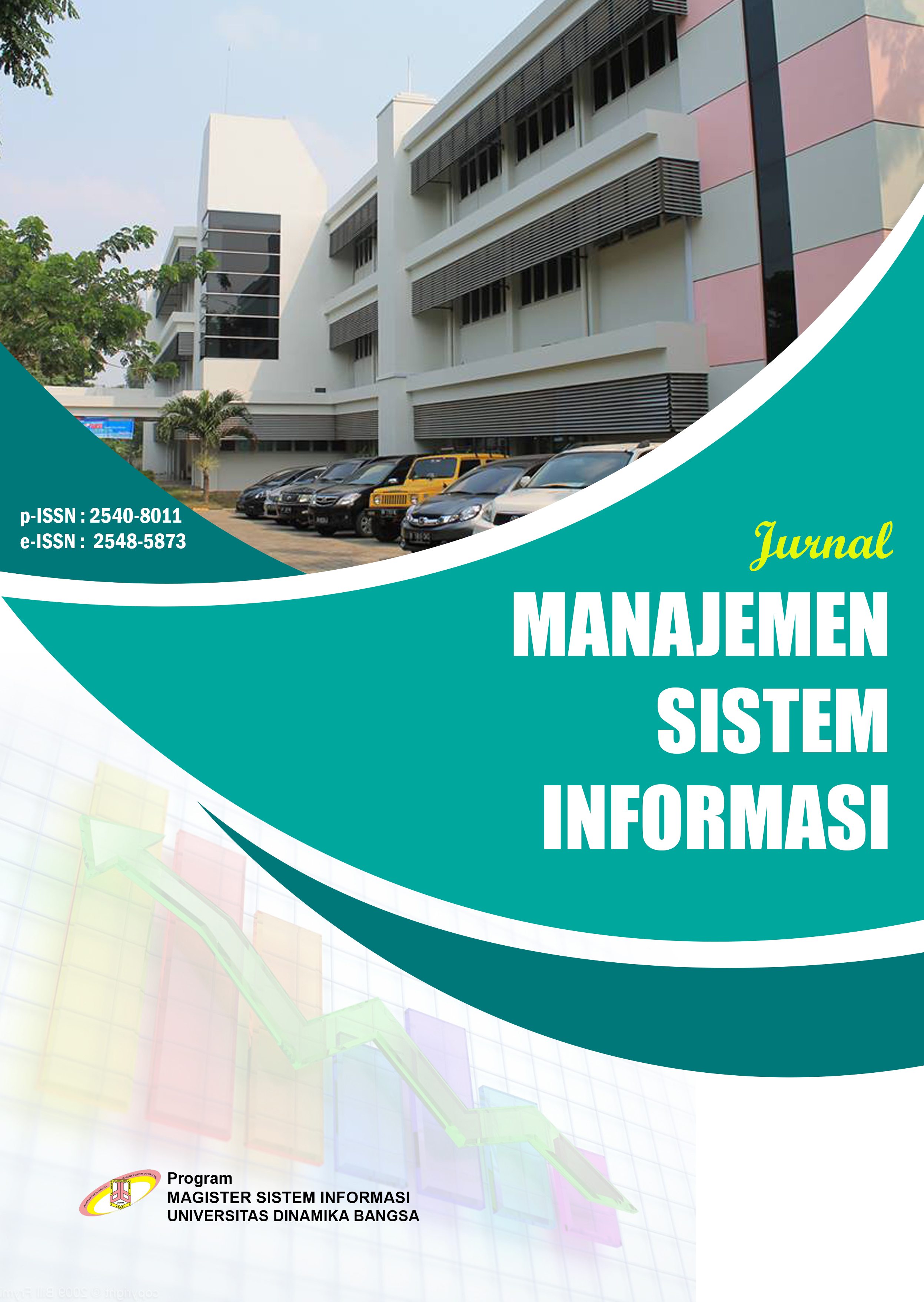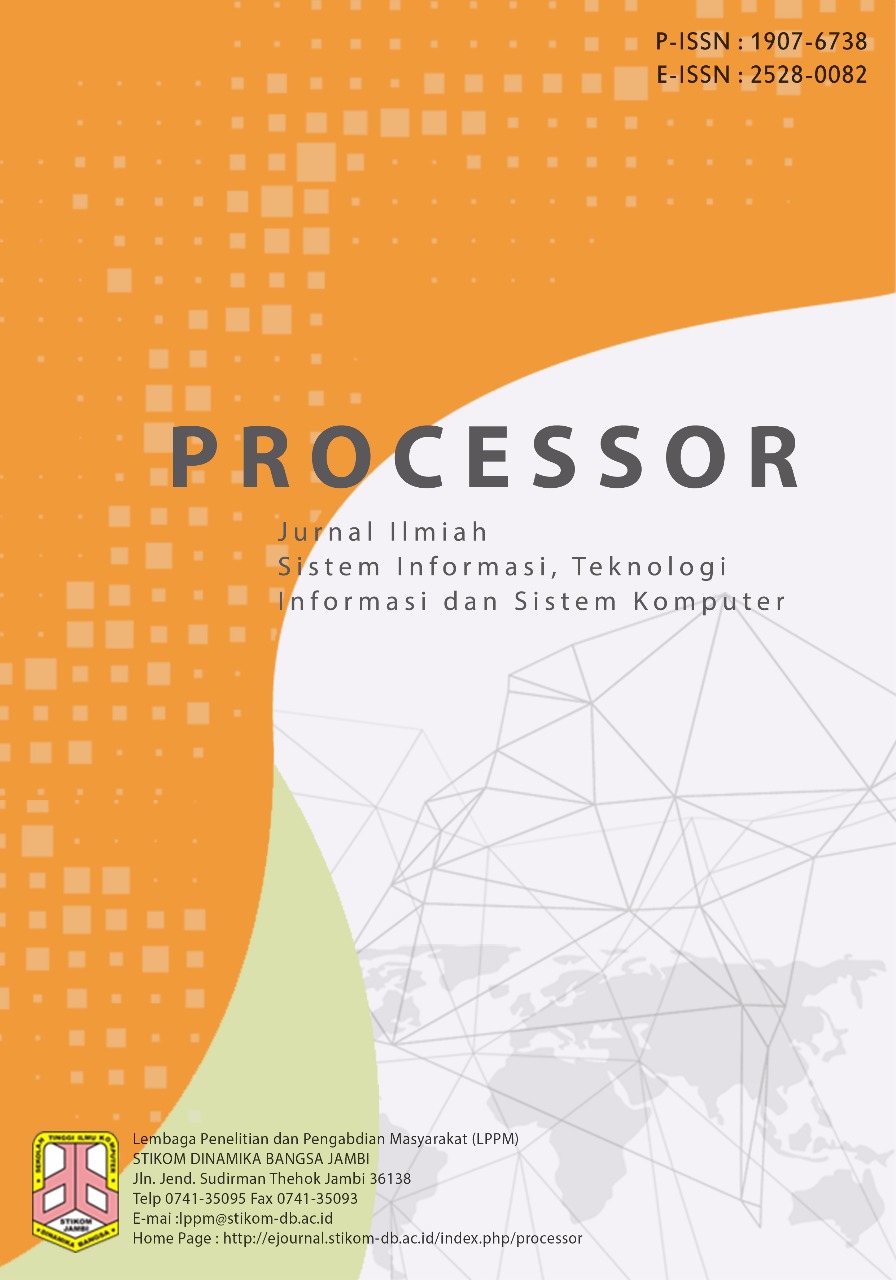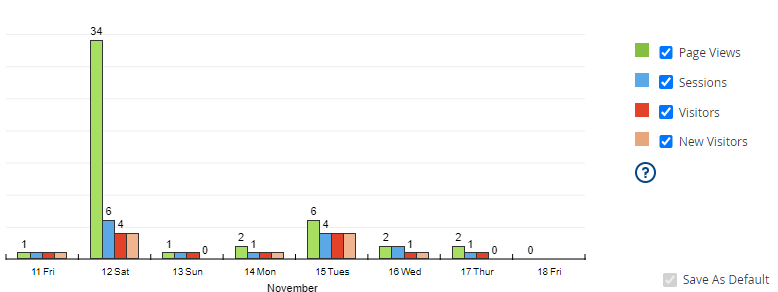Analisis Efektifitas Sistem Informasi Perpustakaan UIN Sulthan Thaha Saifuddin Menggunakan Metode TAM
Abstrak
The Implementation of the Library Information System has been carried since 2014 at UIN Sulthan Thaha Saifuddin Jambi. In its practice, not all users use the system to search online catalogs any library collection. This can be seen of visitor to the system which is small. This study aims at evaluating the effectiveness of the implementation of Library Information System. This research uses the TAM theory by using individual factors in external variables. The sample was obtained as many as 184 respondents who were declared valid. The data analysis is PLS-SEM with SmartPLS. The results of the study shows that those two variables in the TAM is perceived ease of use has a significant effect on its perceived usefulness, but the perception of its ease of use does not have a significant effect on the perceived usefulness of the system. So concluded that the easiness and its usefulness of the system have a real influence on the effectiveness of using the Library Information System. Furthermore, the external variable of acceptance consist of individual factors that have a significant effect on perceptions of usefulness and perceptions of ease of use therefore, those factors must be considered by the leader so that the Library Information System can be used effectively by users.
Unduhan
Referensi
Perpustakaan Nasional RI, “Undang-Undang Republik Indonesia Nomor 43 Tentang Perpustakaan,” Perpustakaan Nasional RI, Jakarta, 2007.
P. Godoe dan T. S. Johansen, “Understanding adoption of new technologies: Technology readiness and technology acceptance as an integrated concept,” J. Eur. Psychol. Students, vol. 3, hal. 38–53, 2012.
M. Igbaria, N. Zinatelli, P. Cragg, dan A. L. M. Cavaye, “Personal Computing Acceptance Factors in Small Firms : A Structural Equation,” MIS Q. Manag. Inf. Syst., vol. 21, no. 3, hal. 279–305, 1997.
R. M. Stair dan G. W. Reynolds, Fundamentals of Information Systems, 13 ed. Buston: Course Tehnology Cengage Learning, 2012.
H. Jogiyanto, Sistem Informasi Keperilakuan, 1 ed. Yogyakarta: Andi Publisher, 2007.
J. Bradley, “The technology acceptance model and other user acceptance theories,” in Handbook of research on contemporary theoretical models in information systems research, 2009, hal. 277–294.
V. Venkatesh, M. G. Morris, G. B. Davis, dan F. D. Davis, “User Acceptance of Information Technology: Toward a Unified View,” MIS Q. Manag. Inf. Syst., vol. 27, no. 3, hal. 425–478, 2003.
E. Daniel, J. Peppard, dan J. Ward, “Managing the Realization of Business Benefits From It Investments,” MIS Q., vol. 6, no. 1, 2007, doi: 0657.
M. Chuttur, “Overview of the Technology Acceptance Model: Origins , Developments and Future Directions,” Spouts Work. Pap. Inf. Syst., vol. 9, no. 37, 2009.
F. D. Davis, R. P. Bagozzi, dan P. R. Warshaw, “User Acceptance of Computer Technology : A Comparison of Two Theoretical Models,” Manage. Sci., vol. 35, no. 8, hal. 982–1003, 1989, doi: http://dx.doi.org/10.1287/mnsc.35.8.982 Full.
A. Schwarz dan W. Chin, “Looking Forward: Toward an Understanding of the Nature and Definition of IT Acceptance .,” J. Assoc. Inf. Syst., vol. 8, no. 4, hal. 230–243, 2007.
F. D. Davis, “A Technology Acceptance Model for Empirically Testing New End-User Information Systems: Theory and Results,” Massachusetts Institute of Technology, 1985.
Mukhlis, “Representasi Tingkat Kepuasan Pemustaka Terhadap Efektivitas Pemanfaatan Sistem Informasi Perpustakaan Digital pada Perpustakaan Perguruan Tinggi Islam Di Yogyakarta (Studi Kasus Di Perpustakaan UIN Sunan Kalijaga Yograkarta),” Khizanah Al-Hikmah, vol. 3, no. 2, hal. 146–155, 2015.
W. Supriyanto dan A. Muhsin, Teknologi Informasi Perpustakaan: Strategi Perancangan Perpustakaan Digital. Yogyakarta: Kanisius, 2008.
M. W. Anzaeni dan L. Latifah, “Analisis Penerimaan Penggunaan Otomasi Perpustakaan UNNES Berdasarkan Pendekatan Technology Acceptance Model (TAM),” Econ. Educ. Anal. J., vol. 6, no. 2, hal. 530–548, 2017.
M. Razak, M. Hidayat, dan R. Arwien, “Analisis Faktor Yang Mempengaruhi Adopsi Aplikasi Pegadaian Digital Service (PDS) Sebagai E-Service Dengan Menggunakan Technology Acceptance Model 2 (TAM2),” SEIKO J. Manag. Bus., vol. 3, no. 3, hal. 92–108, 2020.
Mintaria dan J. Devitra, “Analisis Efektivitas Aplikasi Sistem Informasi Aset POLRI Menggunakan Metode Technology Acceptance Model pada Biro Sarpras POLDA Jambi,” J. Manaj. Sist. Inf., vol. 4, no. 2, hal. 216–228, 2019.
R. Andriani, A. Setyanto, dan A. Nasiri, “Evaluasi Sistem Informasi Menggunakan Technology Acceptance Model Dengan Penambahan Variabel Evaluation of Information System Using Technology Acceptance,” J. Teknol. Inf. dan Ilmu Komput., vol. 7, no. 3, hal. 531–538, 2020, doi: 10.25126/jtiik.20207850.
M. Z. Uska, “Analisis Penerimaan Digital Library Menggunakan Technology Acceptance Model (TAM) di Universitas Hamzanwadi,” EDUMATIC J. Pendidik. Inform., vol. 1, no. 1, hal. 1, 2017, doi: 10.29408/edumatic.v1i1.723.
V. Venkatesh dan F. D. Davis, “A Theoretical Extension of the Technology Acceptance Model: Four Longitudinal,” Manag. Sci. Publ., vol. 46, no. 2, hal. 186–204, 2000, doi: http://dx.doi.org/10.1287/mnsc.46.2.186.11926.
J. Abramson, M. Dawson, dan J. Stevens, “An Examination of the Prior Use of E-Learning Within an Extended Technology Acceptance Model and the Factors That Influence the Behavioral Intention of Users to Use M-Learning,” SAGE Open, hal. 1–9, 2015, doi: 10.1177/2158244015621114.
H.-J. Kim, M. Mannino, dan R. J. Nieschwietz, “Information technology acceptance in the internal audit profession : Impact of technology features and complexity,” Int. J. Account. Inf. Syst., vol. 10, no. 4, hal. 214–228, 2009, doi: 10.1016/j.accinf.2009.09.001.
B. Kinarwanto dan L. Harris, “Faktor-Faktor Pemanfaatan Teknologi Informasi dan Pengaruhnya Terhadap Kinerja Individual (Studi pada PDAM Kota Malang),” J. Ilmu FEB, vol. 1, 2012.
Sugiyono, Metode Penelitian Kuantitatif dan Kualitatif R & D. Bandung: Alfabeta, 2010.
P. I. Santosa, Metode Penelitian Kuantitatif: Pengembangan Hipotesis dan Pengujiannya Menggunakan SmartPLS. Yogyakarta: Andi Publisher, 2018.
J. F. J. Hair, G. T. M. Hult, dan M. Sarstedt, A Primer on Partial Least Squares Structural Equation Modeling (PLS-SEM), Second Edi. Los Angeles: SAGE Publications, 2017.
R. Chomeya, “Quality of Psychology Test Between Likert Scale 5 and 6 Points,” J. Soc. Sci., vol. 6, no. 3, hal. 399–403, 2010, doi: 10.3844/jssp.2010.399.403.
I. Ghozali, Structural Equation Modeling, Edisi 4. Semarang: Universitas Diponegoro, 2014.
N. Park, R. Roman, S. Lee, dan J. Eun Chung, “International Journal of Information Management User acceptance of a digital library system in developing countries : An application of the Technology Acceptance Model,” Int. J. Inf. Manage., vol. 29, hal. 196–209, 2009, doi: 10.1016/j.ijinfomgt.2008.07.001.
Arizqi, “Implementasi Model Modifikasi Technology Acceptance Model (TAM) pada Sistem Informasi Akademik (SIA) di Universitas Swasta Kota Semarang Jawa Tengah,” J. Manaj. Teknol., vol. 18, no. 2, hal. 138–155, 2019.
Romia, Syaifullah, R. Novita, Megawati, dan T. K. Ahsyar, “Efektivitas Penggunaan Smartphone Dalam Mendukung Kegiatan Bisnis Percetakan Dengan Metode Technology Acceptance Model,” Semin. Nas. Teknol. Informasi, Komun. dan Ind., vol. 11, no. November, hal. 138–145, 2019.

















